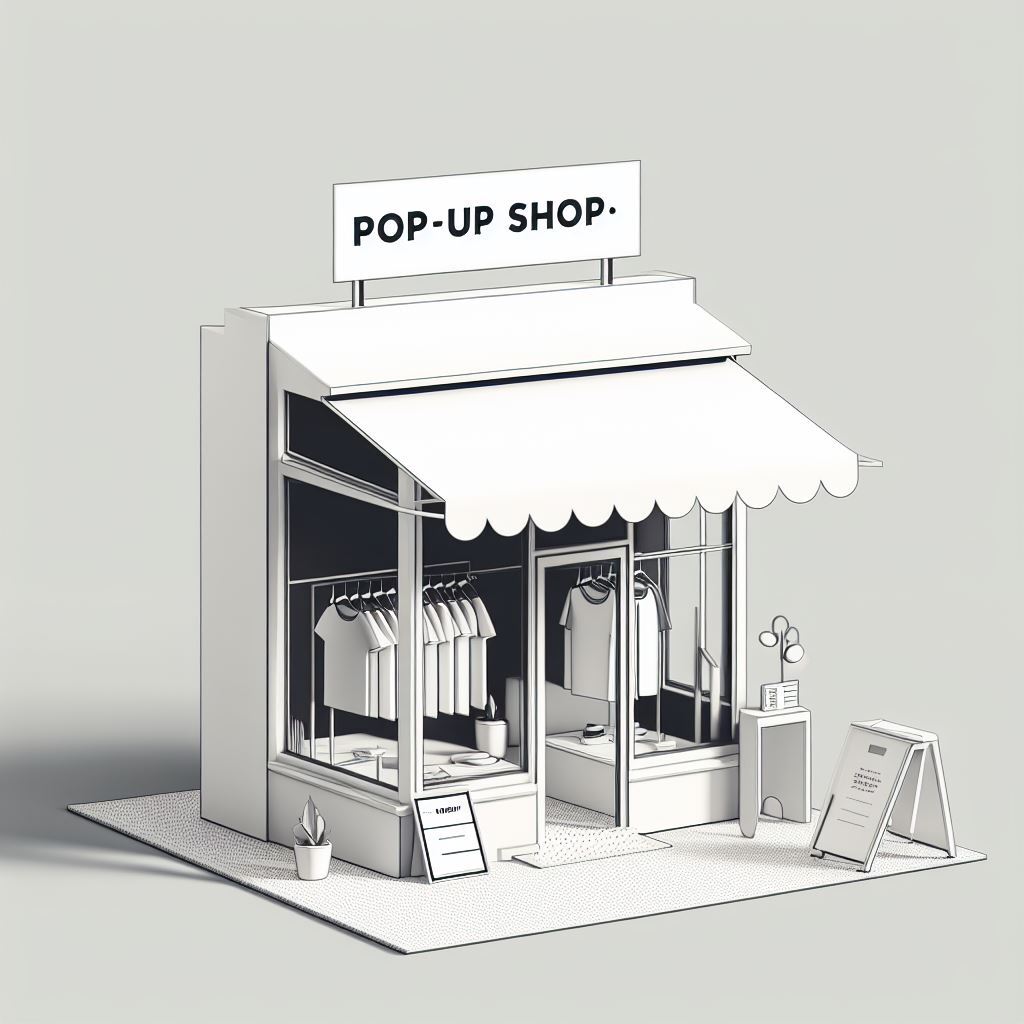Pop-up shops are a new way for customers to find, enjoy, and purchase your products. For new business owners or established retailers, a pop-up shop is an effective additional form of revenue and an addition to your retail marketing strategy.
But bringing in the foot traffic to a pop-up shop isn’t easy. To successfully set up a pop-up shop, it needs to be more than a sales display to entice customers.
Our ultimate guide to pop-up shops is there to help you every step of the way – from choosing a concept and location to getting visitors through the door.
What is a pop-up shop and how does it work?
A pop-up shop is a temporary retail store opened for the purpose of testing a location, selling a trendy product, or profit from seasonal demand. Any retail business type can open a pop-up store, but they’re common for apparel, beauty, and toy businesses.
Retail pop-up stores work by offering a unique, in-person shopping experience to promote your brand while operating flexibly.
How to set up a pop-up shop in 6 steps
Starting a pop-up shop isn’t easy, but the potential benefits are worth it. To set up your new pop-up for success, follow these steps.
1. Know your pop-up shop type
The three main types of pop-up shops are temporary, online, and permanent. Which type your business creates will depend on the location, target audience, and overall goal of the store.
Temporary
Temporary pop-up stores are the most common type – these stores work on short-term leases for maximum flexibility. This type can include:
- Seasonal stores: Christmas, Halloween, etc.
- Experimental stores: Test out a new product or location.
Popping up a temporary store is an excellent way to expand your business, target a new audience, launch a new product, and benefit from seasonal interest at a minimized risk level.
Online pop-up shops
Yes, a pop-up shop can be done online. These e-commerce stores can take the form of temporary websites, social media live streams, or a virtual 3D model of a pop-up store.
Online pop-up stores offer customers the chance to browse products in a new way, without the location limits of a brick-and-mortar store.
However, online pop-up stores aren’t suitable for every business type or product idea. Online stores can also miss some of the benefits of physical pop-ups.
Permanent pop-ups
Sometimes, businesses use pop-up shops to gauge interest and test a location. If the pop-up shop does well, it could become permanent.
Transforming your pop-up into a permanent store is a longer process and is similar to setting up a brick-and-mortar store but with some added specific geospatial data to help you make decisions.
Tip: Sometimes making a pop-up permanent isn’t the answer either. A repeat experiment in another location or making it a seasonal event may suit your business more.
2. How to find pop-up shop space
The most important part of the setup process is finding the right location for your new pop-up.
There are many things to keep in mind when choosing a location. Some of your options are:
Space in a mall
Shopping malls can have booths or vacant spaces available for short-term rent. This option can be more expensive than others, however, you have the benefit of additional foot traffic.
Tip: Make a list of suitable locations. From there, analyze the location’s footfall performance. This can give you an idea of the traffic you can expect, in addition to customers.
Vacant stores
An empty store is a ready-made space for your pop-up shop. Not all may be a good fit, but an ideal space could be just waiting for you.
To find a suitable vacant store, follow these steps:
- Search for vacant storefronts within the area on foot or online
- Call local real estate agents for further information
- Speak to retailers in the area to get insights on the ground
- Find a pop-up shop realtor specialist to book a venue
Mobile pop-ups
Don’t want to stay in one location? Take the pop-up store on the road. A traveling store offers you a wider reach, the opportunity to take part in events, and can catch attention for unique marketing.
The downside is that operations and managing a traveling temporary store can be tricky, particularly if your business hasn’t done it before.
Galleries
Galleries are an excellent option for their high-quality, stylish interiors. Art galleries are typically designed to have a “clean” or minimal look. In other words, the focus is on what’s on display. This transfers nicely to retail.
3. Design the look
Once you’ve decided on where your shop will be, you can start designing the space to fit your needs and brand.
Consider the type of look your customers may find appealing, what matches your brand, and how you can offer a unique experience to draw interest.
When you’re setting up a pop-up shop, make sure all these are considered:
- Wi-Fi: free Wi-Fi can be something customers expect to have access to. It also unlocks opportunities to further advertise your store’s website and social pages on-site and have customers follow them as soon as possible.
- Security against shoplifting: petty theft is having a large impact on the retail industry. In 2022, external theft, including organized retail crime, caused an average of 36% of total loss.
- Optimized displays: consider the movement of people throughout the store, the space in between the displays, and how best to display your products within the space.
4. Booking the venue
Paperwork is daunting, but we’ve broken down the major parts of this step to make it easier.
- Lease: The terms of the lease outline what’s permitted for the period you have the space – for interior design, opening hours, and so on. The lease can make or break your plans, so read it carefully and negotiate as needed.
- Licenses: While this is location-dependent, check to see if you need a license to open your pop-up shop. The license may be a legal requirement, depending on where you are and the planned duration of the store.
- Cover: Insurance is essential to protect your business and pop-up shops are no exception, but you may require some expertise to find suitable cover.
- Permits: Depending on what you’re selling, you may need a permit for the products – for example, a permit will be needed to sell alcohol.
5. Marketing your new pop-up
Almost 66% of retailers cite increased brand awareness as a reason for launching a pop-up store. To get the brand awareness you want and promote your new store for sales, a marketing strategy is required.
A pop-up shop acts as a marketing effort to boost your business overall. It can grow local awareness and offer unique content to promote your brand online. Here are some quick suggestions for social posts about your pop-up:
- Hype up the event beforehand by showing the design process
- Include a countdown until the shop is open
- Tag other local businesses, branches, malls, etc about how excited you are to join the area
- Thank customers for visiting. An authentic post with a statistic about how the store performed (for example, how many visitors popped in) can emphasize the unique experience your customers shared
- A survey of whether consumers would like to see a pop-up shop of your brand in their city
See our in-depth guide to retail marketing strategies for more ideas to get you started.
6. Analyze the results
What are your measurements of success? Some measurements to keep in mind are:
- Social media engagement: look for increases in followers, engagement, and CTR
- Sales: number of sales at your pop-up and increases from your online or brick-and-mortar store
- Footfall: number of visitors to your pop-up
Brand awareness is more difficult to measure. But, getting more attention from social media and the press is a very good sign.
For example, Taco Bell opened a pop-up in California called The Bell: A Taco Bell Hotel and Resort which sold out in two minutes. This kind of story can build awareness and dramatically boost brand awareness if the pop-up shop is launched successfully.
To analyze foot traffic results and set a benchmark, use Almanac’s footfall reports. See an analysis of your city, region, and state for a complete overview.
Pop-up shop frequently asked questions
Where can I do a pop-up shop?
Pop-up shops can be done in a vacant storefront, shopping mall booth or store, gallery, market stall, and many other locations.
Where you should do a pop-up depends on your goal, product, target audience, and budget.
What to sell at a pop-up shop?
Anything can be sold at a pop-up shop as long as you have the proper licenses and permits. Small non-perishable products, exclusives, and newly launched products are all popular options. To draw visitors in, free samples can also be offered.
How much does it cost to do a pop-up shop?
How much a pop-up shop costs varies depending on the location you choose and the duration of the shop. A 2019 survey by Storefront found that 44% have opened a pop-up for less than $5,000.






